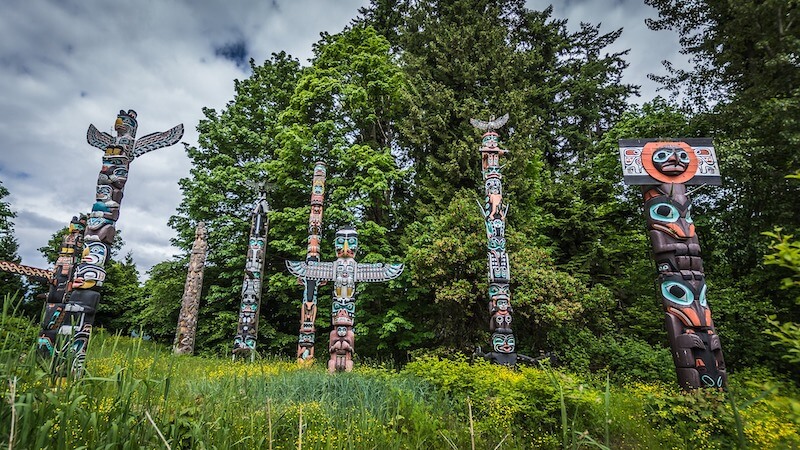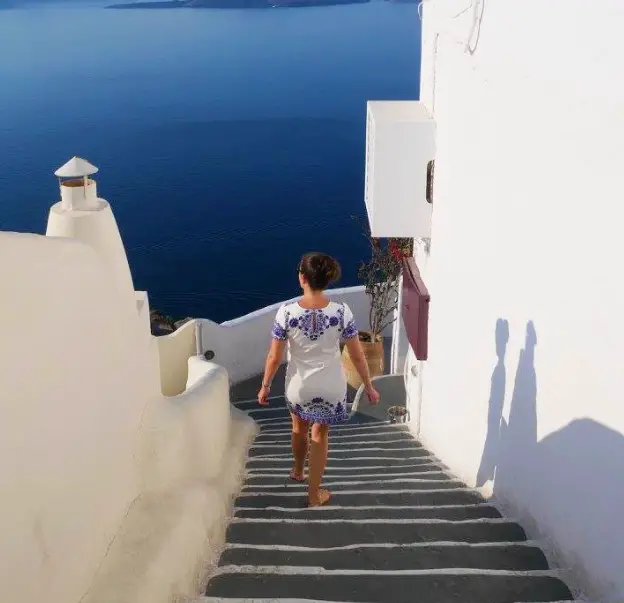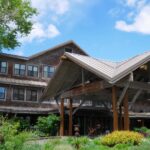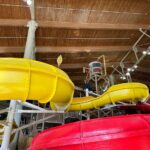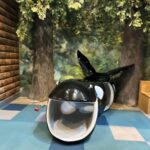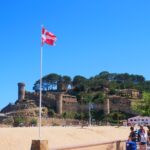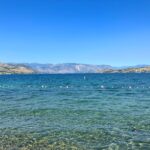23 Things to See in Stanley Park (Full Guide!)
Last Updated on April 3, 2024 by Kelly
If you’re planning a trip to Vancouver BC, you absolutely have to see Stanley Park. It’s one of my favorite places in Vancouver! Located right in the heart of the city, this urban park is where locals and tourists alike come to enjoy the outdoors. (Fun fact, Stanley Park is actually bigger than Central Park in New York!)
We make sure to visit Stanley Park every time we are in Vancouver. This post will cover some of our favorite things to do at Stanley Park. We share our tips for walking the seawall promenade, completing trails within the old growth forest, visiting the totem poles, exploring the Vancouver Aquarium, and so much more. Stanley Park is one of Vancouver’s most beautiful green spaces. Be sure to add it to your itinerary!
About Stanley Park
Stanley Park is a very large park, with over 1,000 acres of outdoor recreational space. The park is located in the northwestern portion of Vancouver’s downtown peninsula. The park is located on the unceded land of the Musqueam, Squamish, and Tsleil-Waututh peoples, and there’s evidence of their presence there as far as 3,000 years ago.
British settlers later arrived to Vancouver and the area was opened as a city park in 1888. The park was named after Lord Stanley, who was a governor general. (That’s also the same guy that donated the Stanley Cup for the National Hockey League.)
In 2010, a Squamish tribe elder (Robert Yelton) proposed that the name of Stanley Park be changed to Xwayxway Park, named after the First Nations village that was located within the park. (His own mother was born in Xwayxway.) This name was not adopted, but perhaps it will be one day.
Stanley Park is known as the “Green Heart” of Vancouver. We love visiting this urban green space!
Best Things to Do in Stanley Park
Disclosure: This post may contain affiliate links. As an Amazon Associate, I may earn commissions from qualifying purchases.
1. Walk the Seawall
The most iconic thing to do at Stanley Park is to walk the seawall. It’s the world’s longest uninterrupted waterfront path! The Seawall extends a total of about 17 miles (28 kilometers) as part of the Seaside Greenway, and the portion that wraps around Stanley Park is about 5.5 miles (9 kilometers) long. It takes most people two to three hours to walk the Seawall. (And it takes about an hour to cycle around the park.)
There are designated lanes for biking and walking, so it’s very easy to navigate the seawall.
You can take a bike tour of Stanley Park, which is one of the best ways to learn more about the park. (And of course see the best places!) The bike tour is approximately 3 hours long.
Construction of the seawall began over 100 years ago in 1917. The seawall was officially completed in 1980, although there have been some significant renovations since then.
Rain or shine, you will find locals enjoying this immense park! We have personally walked and biked the seawall many times. We’ve completed the seawall in the summer, in the winter, and in the rain. Regardless of the season, the seawall is one of our favorite things to do in Vancouver BC.
2. Visit Hollow Tree
Within Stanley Park is an old growth rainforest. The Hollow Tree is one of the oldest trees in the park, estimated to be between 600-800 years old. The tree is a Western Red Cedar that has died and left a giant hollow stump.
People from across the world travel to Vancouver and have their picture taken within the stump. The circumference of the stump is about 60 feet! After a storm in 2006, the stump began to lean at a dangerous angle. Instead of letting the tree fall, the Vancouver Parks Board inserted a metal frame to make sure that it would be a safe attraction for years to come.
3. Visit the Totem Poles and Learn About the First Nations People
Head to Brockton Point to check out the totem poles created by the First Nations people and reflect on their important contributions to the area. There are a total of 9 totem poles at Brokton Point. Many of the First Nations people in British Columbia created totem poles. These include the Haida, Kwakiutl, Tlinglit, Coast Salish, and Nuxalt.
The reason why there are so many totem poles in Stanley Park is because the Vancouver Parks Board began buying them in the 1920s with the hopes of creating a replica First Nations village.
Each totem pole was carved from Western Red Cedar and each totem pole depicts a specific story.
Some of the oldest totem poles are believed to have been created in the 1880s.
Some of the totem poles are replicas of the originals, which were removed from the park to protect them from the weather.
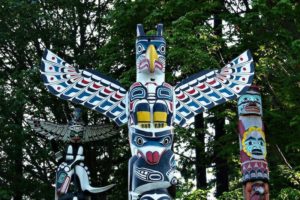
The Rose Cole Yelton Memorial Totem Pole is the most recent totem pole at Brockton Point. The totem pole honors Rose Cole Yelton, the last surviving resident of the Brockton indigenous community.
4. Visit the Vancouver Aquarium
The Vancouver Aquarium is an excellent attraction within Stanley Park. The aquarium has over 30 exhibits that are home to over 65,000 animals. We especially liked watching the sea otters and jelly fish. There’s also a 4D cinema and touch pools.
The Vancouver Aquarium’s hours shift depending on the season.
The Vancouver Aquarium is a special place for us, because it was one of our baby’s first excursions. She loved the bright lights in the tanks, and she especially liked watching the jelly fish float around!
We wrote all about our visit to the Vancouver Aquarium if you’re interested in visiting this amazing place!
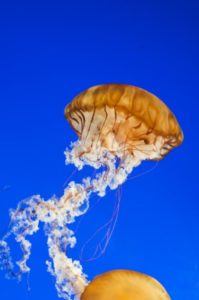
5. Check Out Siwash Rock
Siwash Rock is a unique rock formation that is located within the waters right off of Stanley Park. Siwash Rock is between 49 and 59 feet tall. The rock has special significance to the Squamish people because the rock represents a man named Skalsh who was transformed into the eternal rock as a reward for unselfishness. There was a motion for the rock’s name to be changed to Slhx̱í7lsh, which is the original word for the landmark.
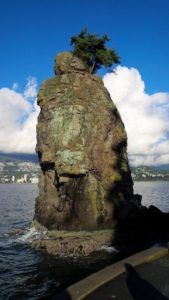
6. Rent Bikes
One of our favorite things to do at Stanley Park is rent bikes. Renting a bike at Stanley Park allows you to quickly see the seawall, as well as traverse many of the inland trails.
There are no bike rental businesses within the park itself, but there are several shops that are located just before the entrance to the park.
We personally rented bikes from Spokes Bike Rentals. They have all sorts of bikes you can rent, including tandem bicycles, child trailers, dog baskets, and performance bikes. (We rented a tandem bike, and it was a super fun way to see the park together!)
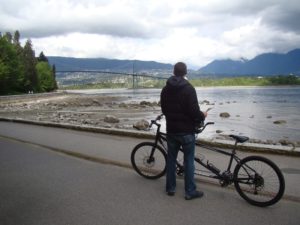
7. Visit the Gardens
Stanley Park is home to several beautiful gardens.
The Ted and Mary Grieg Rhododendron Garden is filled with rhododendrons. (These flowers also happen to be the state flower of my home state, Washington.) The best time to visit this garden is in early May, during peak season. However, you’ll be able to see some rhododendron blooms as early as March and as late as June.
The Shakespeare Garden pays homage to Shakespeare, who was believed to have been a very knowledgable gardener. In the early 1900s, many Shakespeare gardens were built around the world to mark the 300 year anniversary of his death. The first tree was planted in the Vancouver Shakespeare garden in 1916 to mark the occasion. The garden was officially opened in 1936 as part of Vancouver’s Golden Jubilee celebration. Many of the trees and plants in the garden were chosen to be placed in the garden because they were specifically mentioned in Shakespeare’s writing. Where appropriate, plaques name the plants with corresponding Shakespeare quotes.
The Rose Garden was created in 1920 by the Kiwanis Club. The roses bloom in the summer (best to see them in June and July), but there are a variety of flowers that also bloom in the spring and fall. The garden is located in the center of the park.
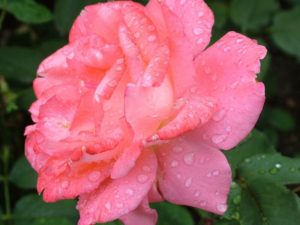
8. Go Swimming at the Second Beach Pool
The Second Beach Pool is a heated outdoor pool that is 80 meters long. It’s a graduated depth pool with designated swimming lap lanes. The pool is open seasonly, typically from late May to early September. It’s a great place to take children, because there are two slides and a large shallow area.
The pool overlooks the English Bay at Second Beach, so it has quite the view. There is a small fee to swim in the pool. We think this pool has one of the best views!
9. Spend the Day at the Beach
There are two popular beaches within Stanley Park: Second Beach and Third Beach. (English Bay Beach, located just outside Stanley Park, is also known as First Beach.)
Second Beach is popular for the heated pool, volleyball court, and nearby playgrounds. This area also has public restrooms and a seasonal concession stand.
Third Beach is a bit more secluded and is an ideal spot to watch the sunset. This beach also has public restrooms and a seasonal concession stand.
10. Ride the Stanley Park Train
Located within the park is the Stanley Park Train. The 15-minute train ride will take you through the forest. The train features a vintage engine and passengers can take a quick photo before boarding. An adult ticket costs $7 CAD.
The train is a popular attraction for many holidays, including the Ghost Train for Halloween and a holiday lights train for Bright Nights.
Riding the train is a great family activity at Stanley Park!
11. Attend a Concert at the Malkin Bowl
This outdoor venue seats 2,000 people. If you want to catch a show at Stanley Park, be sure to view their upcoming events schedule.
The Malkin Bowl has outdoor seating and lots of lawn space. Attendees often bring blankets and watch shows from the grass. The Malkin Bowl is especially known for hosting Theatre Under the Stars (TUTS).
The Malkin Bowl was built in 1934, and it was named after the wife of a former Vancouver mayor.
| If you’re planning to visit Vancouver, be sure to check out our post on how to spend a weekend in Vancouver. We share the must-see attractions, the best places to eat, and where to stay to make the most of your trip to Vancouver BC. Also be sure to check out our guide on the best places to eat in Vancouver. |
12. Visit the Lost Lagoon
The Lost Lagoon is located near the entrance of Stanley Park. If you want to walk around the lagoon, it’s about a 30 minute walk. The lagoon is a man-made water feature. In the center of the lagoon is the Jubilee Fountain. The fountain was installed in 1936 as part of Vancouver’s Golden Jubilee celebration.
Prior to the creation of the lagoon, the area was a mud flat. At low tide, the lagoon would disappear, hence it’s name “lost” lagoon. The Stanley Park Nature House is adjacent to the lagoon and is operated by the Stanley Park Ecology Society.
13. Take a Walk to Beaver Lake
The trail to Beaver Lake is 1.5 kilometers. This wetland area has a lot of diverse wildlife. The lake is really more of a wetland, and is not suitable for things like swimming. We visited Beaver Lake when we rented bikes, and it was a fun little trail within the park. Most of the trail is located within the forest, and we found it to be a quiet and secluded place within Stanley Park.
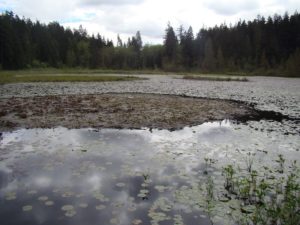
14. Visit Ferguson Point
Ferguson Point is located on the west-facing portion of the park. During World War II, artillery guns were placed on the point. Now, there is a plaque providing a brief history of that time period. Ferguson Point is named after A.G. Ferguson, who was one of the first park commissioners. He used his own money to pay for the park’s maintenance when the budget was gone. In addition to the artillery plaque, there’s also the Teahouse, the E. Pauline Johnson Memorial (the poet who named the Lost Lagoon), and the Burma Forces Cairn.
15. View the Nine O’Clock Gun
The Nine O’Clock Gun is a cannon located in the park that fires at 9pm each evening. During the covid pandemic, the gun fired off at 7pm in support of essential workers. The gun was originally located at the Brockton Point Lighthouse. It was fired at 9pm every night so that citizens could set their clocks. The gun was cast in 1816 in England and brought to Vancouver in 1894. The gun has fired nightly most days for nearly a century.
16. Visit Lumbermen’s Arch
Lumbermen’s Arch is a giant arch created by three very large trees. The first version of the arch was created in 1912 for a visit from the Duke and Duchess of Connaught. The arch was replaced by a much more simple version in 1952.
17. Visit the Lighthouses at Stanley Park
There are two lighthouses located in Stanley Park: The Brockton Point Lighthouse and the Prospect Point Lighthouse. The Brockton Point Lighthouse was constructed in 1890. It’s a square tower that’s painted red and white. The base of the lighthouse is arched and even has a walkway beneath it. Currently the lighthouse is inactive. The Prospect Point Lighthouse is much smaller. It was built in 1888, just four days after Stanley Park opened.
18. Explore the Many Trails at Stanley Park
In addition to the Seawall that surrounds the park, there are numerous trails within the park itself.
The Cathedral Trail leads to the Seven Sisters Replantation. The original Seven Sisters were large old growth trees that needed to be cut down for safety purposes. The city planted new trees in honor of those giant trees.
The Avison Trail is a steep trail that will give you a glimpse below the Lions Gate Bridge.
The Beaver Lake Trail is also a pretty trail that leads to the lake. It’s a nice place to get away from the sounds of traffic and people.
19. Engage in Sports and Recreation
Stanley Park is home to a number of clubs, including the Golf Club, Rowing Club, Yacht Club, Brockton Point Cricket Club, and the Lawn Bowling Club.
In addition to the activities above, there are also volleyball courts, basketball courts, and tennis courts.
20. Visit Ceperley Park
Ceperley Park features a large grassy area, two large playgrounds, and a basketball court. Ceperley Park is close to the beach and is a popular destination for families. (FYI Ceperley Park is often referred to as Ceperley Field.)
While at the park, you can also see the Air India Memorial, which is dedicated to the citizens that lost their lives during the terrorist attack in 1985.
Ceperley Park is typically one of the most busy sections of Stanley Park. It’s home to numerous events, including Movies in Stanley Park.
21. Eat at the Teahouse in Stanley Park
One experience we highly recommend is making reservations at the Teahouse in Stanley Park. This nice restaurant serves dishes inspired by local ingredients. It’s the perfect place to visit to rest after enjoying the outdoor activities at the park. The Teahouse is generally open Thursdays through Sundays.
Some examples from their menu at the time of writing include: lobster bisque, pan-seared steelhead salmon, miso glazed sablefish, and chocolate milano cake. We calculated the average price of an entree, and the average price was $41 CAD.
22. Have a Craft Beer at Stanley Park Brewing
After exploring the seawall, head to Stanley Park Brewing to enjoy a bite to eat and a craft beer. They brew their own beer, and each type of beer is a tribute to the park. For example, Windstorm (West Coast Pale Ale), Sunsetter (American Wheat Ale), and the Trail Hopper IPA (India Pale Ale).
Their beers are unfiltered (which improves the taste) and they dry-hop (which enhances the hoppy flavor). Their brewmaster has been working there for over 10 years, so he knows what he is doing!
You can also plan to have a meal at their brewpub. Their menu includes dishes like chicken wings, gyoza, fish tacos, and cheeseburgers. They are also open for brunch!)
23. Enjoy Views of the Lions Gate Bridge
While you’re walking along the seawall, you’ll see the Lions Gate Bridge. The suspension bridge crosses over the Burrard Inlet. You can easily view the bridge from Prospect Point, or from the Avison Trail. The Lions Gate Bridge was constructed in 1937 is one of the most-photographed sites in Vancouver BC.
How to Get to Stanley Park
Stanley Park is located in Vancouver BC. Stanley Park is almost entirely surrounded by water. Stanley Park has views of English Bay, Burrard Inlet, and Vancouver Harbor.
Stanley Park is easily accessible from Vancouver’s West End and Downtown Vancouver. You can walk or bike to the park from popular neighborhoods such as Coal Harbor and Gastown. The Lions Gate Bridge, located on the north side of Stanley Park, will take you to West Vancouver or North Vancouver.
Although it is possible to walk to Stanley Park, you’ll probably want to save some of your stamina for walking within the park. (Unless you’re used to walking long distances, you’ll probably want to make sure you can walk the seawall or some of the trails within the park!)
We recommend either biking or driving to Stanley Park. We have done both options, and both are very convenient.
If you rent a bike, you can easily cruise throughout the park and stop wherever you like. We were able to easily rent bikes near the entrance of Stanley Park, and we had the best time exploring the park on a tandem bike! You can also book a bike tour, and your guide will show you all around Stanley Park.
You can also take your car and drive through Stanley Park. There are numerous parking spots, so you it’s fairly easy to see most of the sites within the park. We took our car the last time we visited with our young daughter. We visited Vancouver during the winter, and at the time it was the most convenient option for us.
Parking at Stanley Park
Parking at Stanley Park is fairly straightforward. There are paid parking lots located throughout the park. It’s important to note that every parking lot within the park is paid parking. However, if you purchase parking, it is valid at any location within the park.
We purchased several hours’ worth of parking, and then we proceeded to use that same ticket to park at several different lots.
There are over a dozen parking lots at Stanley Park. There is no overnight parking at Stanley Park. The company that manages parking at Stanley Park is EasyPark. (There is an app you can download.) If you have an electric vehicle, there are two charging stations outside the Vancouver Aquarium.
Frequently Asked Questions (FAQs)
Are there playgrounds?
Stanley Park has four playgrounds that are perfect for families with young children. The four playgrounds are located at Ceperley Park, Rose Garden, Second Beach, and the Train Station (next to the miniature train). Our daughter had a blast at the playgrounds. We thought they had a good variety of slides, swings, and more. There’s also a water park that is open seasonally next to the seawall at Lumbermen’s Arch.
How long does it take to walk around Stanley Park?
If you’re walking the loop around the seawall at Stanley Park, we recommend that you set aside at least 3 hours. You’ll probably want to take your time and stop to take in the numerous views.
Is Stanley Park dog-friendly?
Stanley Park is a dog-friendly park located in Vancouver BC. Dogs may enter the park as long as they are leashed. It’s important for owners to clean up after dogs. There is a fenced unleashed dog park located within the park (near the tennis courts), but it is not very big. It looks like they fenced off an old tennis court, so it doesn’t have a lot of room for running around.
Summary
Stanley Park is easily one of the best things to do while in Vancouver BC. I’ve visited this park in all four seasons, and there’s always something fun to do. We especially enjoy walking the Seawall and admiring the views of downtown Vancouver. We hope this post inspires you to add Stanley Park to your Vancouver BC itinerary!
Disclaimer: We always strive for content accuracy. Since the time of publishing, travel-related information regarding pricing, schedules, and hours may have changed. Please look up such information directly from each vendor or institution for the most current information.

